Greenbank was once the home of the philanthropic Liverpool family, the Rathbones, who lived in Greenbank House. The surrounding land was bought by Liverpool Corporation in 1897 on condition that it was maintained as a recreation ground for the general public, and that the trees were preserved.
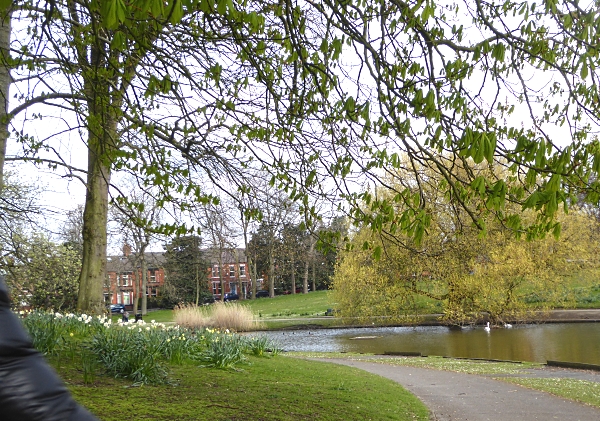
It was a bright day, but quite cold, and sometimes felt like January. The Daffodils are mostly over but the Bluebells (mostly Spanish) are about half out. There were plenty of birds on the park lake, including several Coots nesting on the platforms provided, Canada Geese, Mallards, Moorhens, Wood Pigeons and one Muscovy duck. A strikingly-plumaged Heron stood on a nest platform, feathers ruffled by the cold gusty wind.
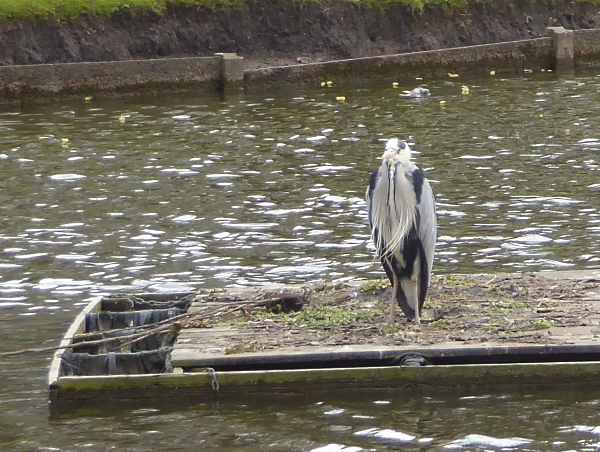
Two young Mute Swans looked like they were pairing up, but they were only last year’s cygnets, still showing some brown plumage, so they are far too young yet.
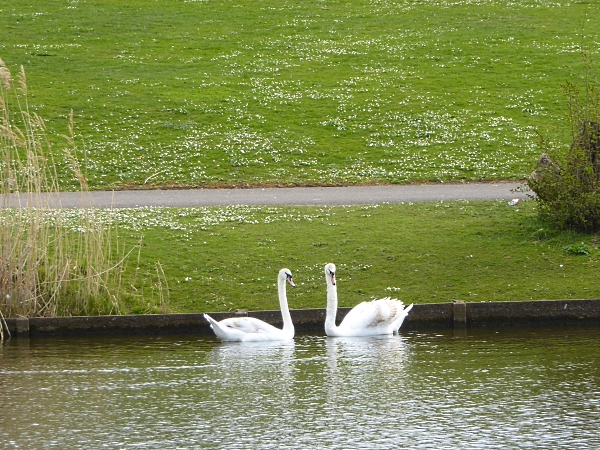
Two Cormorants in breeding plumage flew in. I love the way they swim with an alert-looking heads-up air, as if doing an inspection.
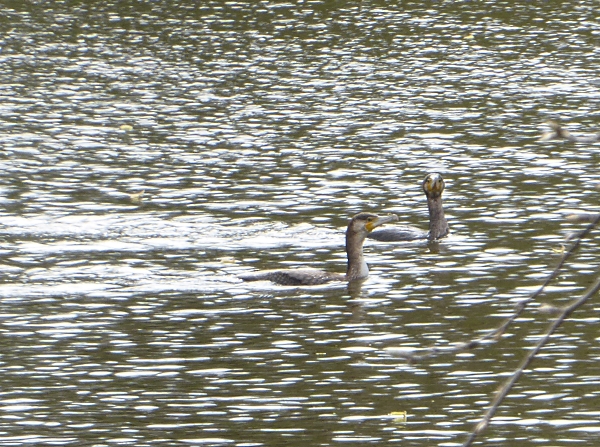
One of the old trees at the south end of the lake was a Caucasian Wingnut Pterocarya fraxinifolia, while on the eastern bank were some new tree plantings. Two young Larch trees may well have been Japanese Larches, Larix kaempferi, as the flowers weren’t bright crimson, but pinkish-cream. One still in its planting cage was definitely some sort of Alder, because it bore last year’s cones, but the new leaves were yellow, the twigs pale bronze and the bark almost white. It might be Alnus incana ‘Aurea’, a variety of the Grey Alder known as Golden Alder.
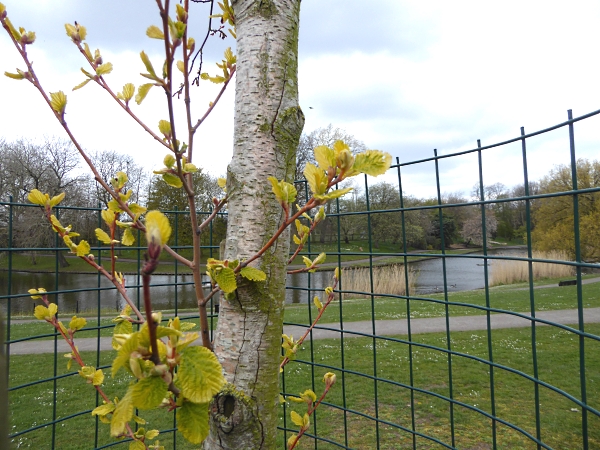
We had lunch in the sunshine in the Old English garden, which is all that remains of the Rathbone’s estate. There were a couple of unusual upright Magnolias, and a pergola showing buds of Clematis and Wisteria. We looked at a small ornamental tree with very dark purple foliage. It wasn’t a Copper Beech, but looked rather like Hornbeam, although I have never heard of a red one. It had a twiggy base to the trunk like Lime and some of the shoots were reverting to the pale green leaves. Could it be a Purple Cherry Plum Prunus cerasifera ‘Pissardi’? Here are some of the leaves next to a quotation from Eleanor Rathbone, a campaigner for women’s rights.
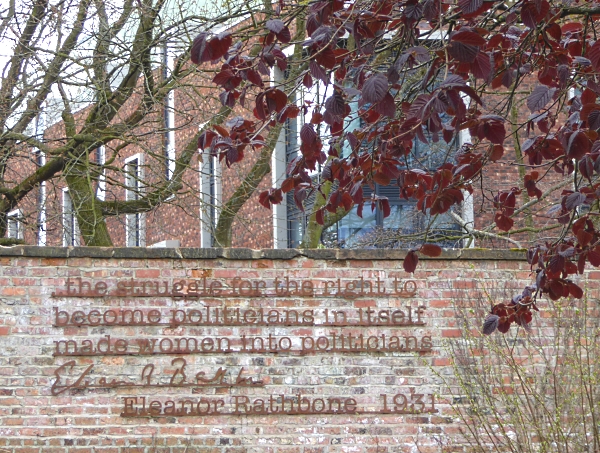
To our surprise, at the western end of Greenbank Lane, where it joins Sefton Park’s perimeter road, the island in the car park had a cluster of green and purple trees, clearly of the same species as each other, but two different colour varieties. These looked more like the Purple Cherry Plums I know from Birkenhead Park but they bore just a few little red conical fruits like Capsicums. I’m flummoxed by these purple trees!
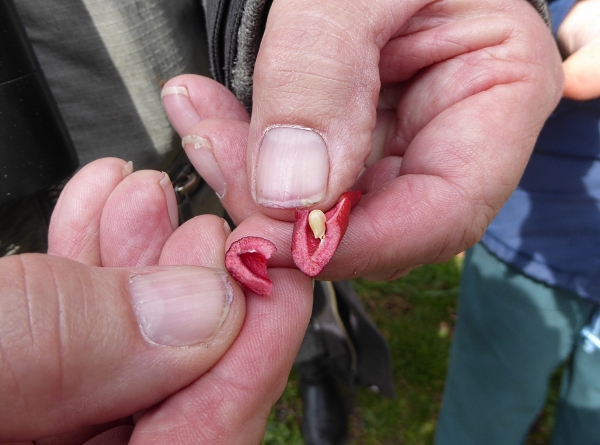
(Added 19th April – it might be the result of an infection by the fungal plant pathogen Taphrina padi, which usually infects Bird Cherry, see this Wikipedia article . On the Facebook group “British and Irish Trees” there are some similar pictures and the suggestion that it also infects the purple Cherry Plum Prunus cerasifera var. atropurpurea.)
By the old aviary in Sefton Park we looked at the stump of a recently-felled big old tree. It may have been one of the original Beeches planted in about 1872. On the lake we had a very quick glimpse of a Little Grebe, but it dived and vanished. There was no sign of the pair of Mandarins, but there were several families of little punk Coots (are they called Cootlings?)
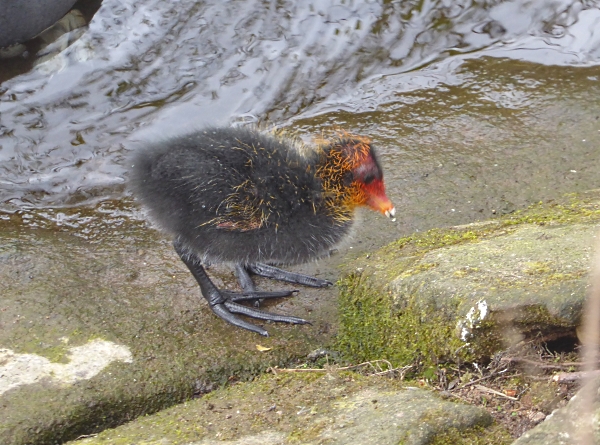
A Canada Goose was sitting on a nest on the island, apparently plucking down from her breast. We could see one pale fawn egg in front of her legs, maybe two, but she wasn’t ready to incubate them yet.

A Jay came down to the edge of the lake for a drink.
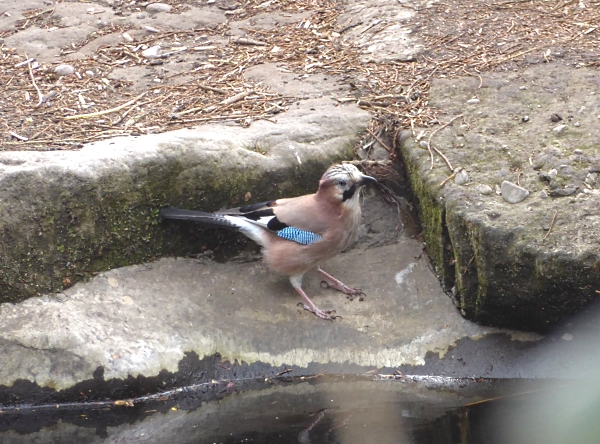
There is a row of wonderful gnarled Cherry trees near the old bandstand, and many of the passers-by were admiring the profuse blossom in an echo of the Japanese custom of hanami or Cherry-blossom-viewing.
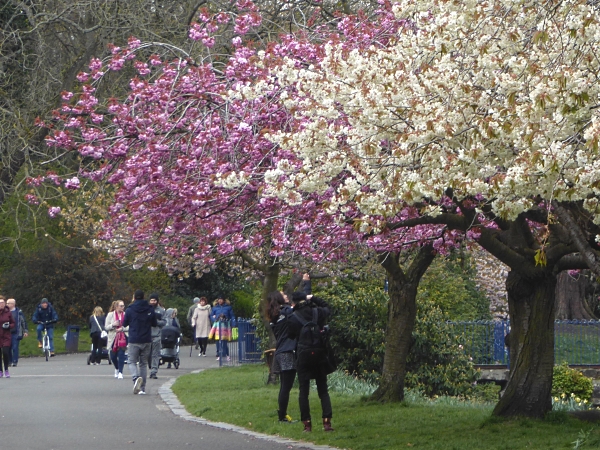
The Palm House was staging a free concert by the Band of the Duke of Lancaster’s Regiment. They were very good, but most of us didn’t stay longer than the first two numbers.
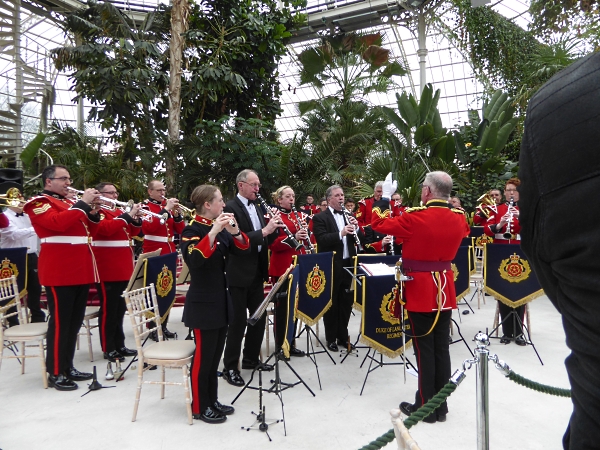
On the way back to the buses at Aigburth Vale we spotted another Caucasian Wingnut tree and a possible young Butternut tree. There was a Pied Wagtail on the verge of the lake and several Tufted Duck out in the middle. There had been reports of a rare Icelandic Gull in the week, but we couldn’t spot it. Some of the Alder shrubs were infested with hundeds of Alder leaf beetles, Agelastica alni. According to the RHS website, the adults overwinter in the leaf litter and emerge in the spring to mate. But if that’s the case, what ate all those holes in the newly-emerged Alder leaves? The beetles don’t eat holes in leaves do they?
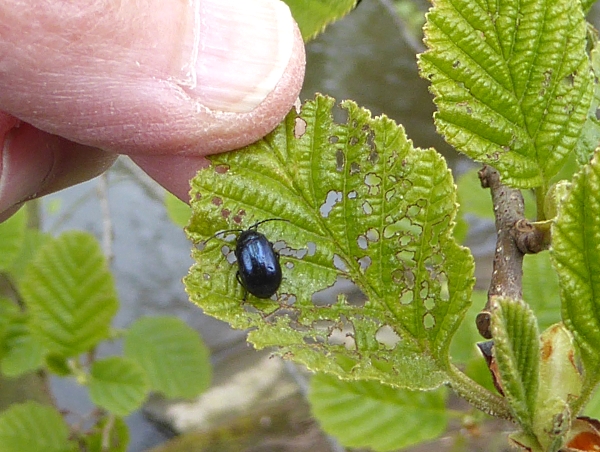
The RHS says “Larvae can be found on the leaves from May to July.” Even allowing for the quick start to the spring this year, those chewed leaves still seem anomalous. Did the first adults emerge in that warm spell in February and lay eggs then? There wouldn’t be many leaves for the caterpillars to eat at that time. I regret we didn’t turn the leaves over and look for them. The Alder leaf beetle used to be considered rare in the UK, perhaps extinct, with hardly any sightings between 1946 and 2003. In 2004 larvae and adults were found in Manchester and the species has been spreading ever since. It was found in South Hampshire in 2014 and in North Wales in 2018.
Public transport details: Bus 86A from Liverpool ONE bus station at 10.08, arriving Smithdown Road / Borrowdale Road at 10.33. Returned on bus 82 from Aigburth Road / Jericho Lane at 3.15, arriving Liverpool ONE bus station at 3.30.
